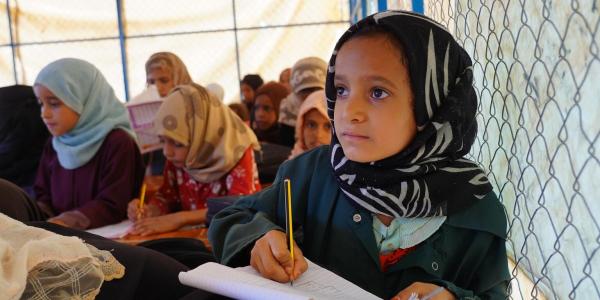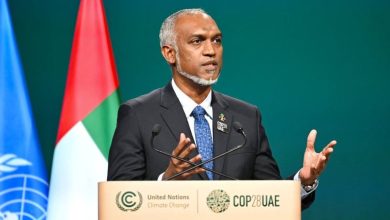More than 11 million children in Yemen are in need of human assistance after eight years of crushing conflict
Afroza Hossain
According to a statement released today by UNICEF, eight brutal years of conflict in Yemen have devastated the lives of millions of children and left 11 million of them in need of one or more forms of humanitarian assistance. The organization also issued a warning that millions of children could face greater risks of becoming malnourished if nothing is done immediately.
The devastating confluence of compounding factors that led to the humanitarian crisis in Yemen is as follows: eight years of intense conflict, a collapsed economy, and a social support system that was crippled affected essential services.
The contention has additionally exacerbated the continuous unhealthiness emergency in Yemen. There are 2.2 million children who are suffering from acute malnutrition, with over 540,000 of those children experiencing severe acute malnutrition, which is a condition that can be fatal if it is not treated right away.
“The existences of millions of weak youngsters in Yemen stay in danger due to the practically unbelievable, horrendous, outcomes of the devastating, ceaseless conflict,” said UNICEF Yemen Delegate Peter Hawkins. ” Throughout the previous eight years and beyond, UNICEF has been present, providing the desperately needed assistance, but we can only support affected children and families so much without a lasting peace.
The United Nations has confirmed that more than 11,000 children have died or been seriously injured between March 2015 and November 2022. The warring parties have recruited and used more than 4,000 children, and there have been more than 900 attacks on educational and health facilities and military use of them. All of these things make it harder for children to realize their fundamental rights to safe and adequate access to education and health care. The actual death toll is probably much higher because these are only the verified numbers.
In Yemen, up to 8 million people are in need of mental health and psychosocial services due to years of conflict, misery, and grief. Children and caregivers face multiple threats and displacements; as a result, they frequently turn to negative coping strategies like child marriage, child labor, and, frequently, recruitment into the armed forces.
In a similar vein, the predicament that children who have been internally displaced continue to be of the utmost concern. Over 2.3 million children remain housed in displacement camps, where they lack adequate access to WASH, nutrition, education, protection, and basic health care.
According to Hawkins, “After eight years, many children and families feel stuck in a perpetual cycle of hopelessness.” When you recently went to visit a family that has been out of their home for more than seven years, you realized that for far too many families, the only thing that has changed is the look on their children’s faces. Providing these children with some room for hope of a peaceful future is absolutely critical because children have grown up knowing nothing but conflict.
In order to continue its life-saving humanitarian intervention for children in Yemen in 2023, UNICEF requires $484 million urgently. UNICEF may be forced to reduce the critical assistance it provides to children who are at risk if funding is not received.
“The children of Yemen ought to be able to look ahead with hope rather than fear.” By making a commitment to the Yemeni people and rescuing a nation and its exhausted people from the brink, we appeal to all parties to assist us in bringing that hope to them. Hawkins said.
The subsidizing hole UNICEF kept on looking through 2022 and starting from the start of 2023 is placing the necessary compassionate reaction for kids in Yemen in danger, including admittance to wellbeing, sustenance, training and WASH administrations. These children’s chances of surviving and developing in the complex humanitarian crisis are significantly diminished without UNICEF’s assistance.
In spite of the difficulties, UNICEF was able to:
- Support the treatment of severe acute malnutrition for more than 375,000 children in 4,584 primary health care facilities and 34 therapeutic feeding centres.
- Provide emergency cash transfers to almost 1.5 million households every quarter — benefitting around 9 million people.
- Provide access to safe and sustained drinking water to 6.2 million people through a wide spectrum of activities including water trucking, the installation of water distribution points, and the expansion of water supply systems to Internally Displaced People’s camps. UNICEF also provides fuel to support the production and distribution of clean water to 36 Local Water and Sanitation Corporations in 15 Governorates.
- Provide vaccination against measles and polio to at least 2.1 million children who have little to no access to primary health care.
- Reach more than 478,000 children and caregivers in conflict-affected areas with psychosocial support, and over 5.2 million children and community members with lifesaving mine risk education.
- Reach more than 2.7 million people living in remote rural areas with access to public healthcare centres services.
- Support Mother, Newborn and Child Health (MNCH) services in 24 hospitals providing operational assistance, as well as equipment and supplies. In addition, through the support to 4,500 static Outpatient Therapeutic Programme (OTP) centres and 288 mobile teams, treatment and prevention of malnutrition services were scaled up.
- Over 538,800 children provided with individual learning materials, and more than 856,600 children have access to formal and non-formal education, including early learning.





